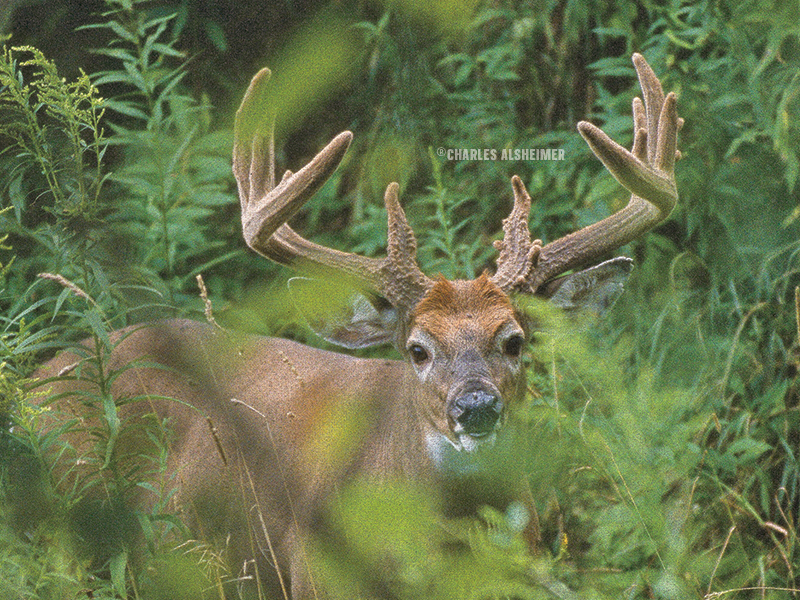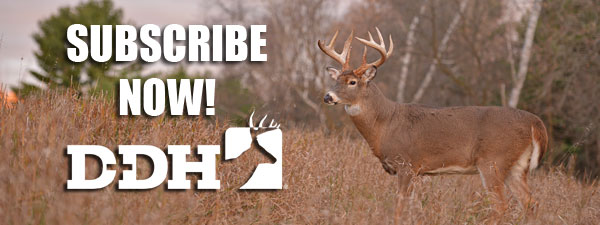What follows is a series of photos that document the antler growth process of one mature white-tailed buck. I photographed this buck in western New York State. During the year prior to this pictorial’s timeline, moisture and growing conditions were slightly above average. The buck was 8 years old, healthy and in the prime of his life. Typical of a buck of this stature, his antlers scored 154 Boone and Crockett Club inches after velvet peel.
How It Happens
There are no cookie-cutter bucks. Each is distinctly different. Some grow antlers that are narrow and tall, while others have drop tines and wide inside spreads. No two are identical, which adds to the whitetail’s uniqueness. Seldom does a buck grow his largest antlers before age 6. Over the 25 years I raised whitetails to study behavior and nutritional needs, the earliest I had a buck reach maximum antler growth was 6 and the oldest 9, with the average age being 7.
Also, the rate at which a buck’s antlers grow depends on several factors, such as genetics, health, age, stress, soil quality and overall quality of natural and agricultural habitat. Of the bucks I raised, most cast their antlers between January 20 and March 10. The earliest I had a buck cast antlers was January 1 (he was injured), and the latest was April 3.
When antlers are cast, the pedicle bleeds, causing a scab to form. The scab then heals from the outside to the center. When fully healed, the top of the pedicle is covered with a brownish-gray skin, with a small light-gray dot in the center. Daylight increases as winter wears on, setting the stage for antler growth.
When day length reaches a certain point, blood begins flowing to the pedicle, and antlers begin growing. The skin covering the pedicles pushes upward through a series of arteries that carry blood to the antlers as they grow during the next four-plus months. During the growing process, blood flows through a series of veins and arteries and forms a protein base upon which minerals are deposited.
The skin covering the growing antlers is called velvet because it feels like velvet. The velvety texture is actually a result of hundreds of tiny hairs that grow out of the skin. These hairs serve a purpose: to alert the buck of danger when the antlers touch brush or other obstacles. Because the velvet consists of blood vessels, the antlers are warm to the touch and only slightly cooler than a whitetail’s 101-degree body temperature. The velvet also makes a buck’s antlers appear much larger than they actually are.
Most bucks in the North are finished growing their antlers by August 10. Then the hardening process begins, which usually takes 20 to 25 days. Though the antlers will be solid bone when the velvet is peeled, they are far from hard during the early stages of growth. From the time they begin growing in late March until about July 15, a buck’s antlers are bulbous and pliable. Therefore it’s not uncommon for a buck to cut or even sever a beam or tine during the growth process. If the antler is badly cut or severed, the buck can bleed to death.
If a buck is mature and has everything going for him, his antlers might grow ½ to 1 inch per day, especially from June 15 to July 15, when daylight is greatest. During this 30-day period, antler growth explodes.
Antler Growth Timeline
April: From the time antlers begin growing in late March through the end of April, growth is minimal. That’s mostly because the amount of daylight is much less than what it will be in June. Second, most bucks are still stressed from the long winter, so their body is in recovery mode. Another reason antler growth is slow during April is the lack of quality food. Spring green-up doesn’t normally occur in those states north of the 40th latitude (northern Maryland to northern Missouri) until mid- to late-April. By the end of April, brow tines and 1 or 2 inches of additional antler beam should be easy to spot on fully mature bucks.
May: In most whitetail locales, May bursts onto the scene with abundant high-octane food, natural and man-created. Natural foods and forages preferred by whitetails are high in protein and other essential nutrients throughout May. This lets a whitetail’s body condition recover from the stress of winter, setting the stage for rapid antler growth. By the end of May, the G-2 points (second point on a typical rack) should be noticeable. In addition, the antler beams should now be about half of their ultimate length.
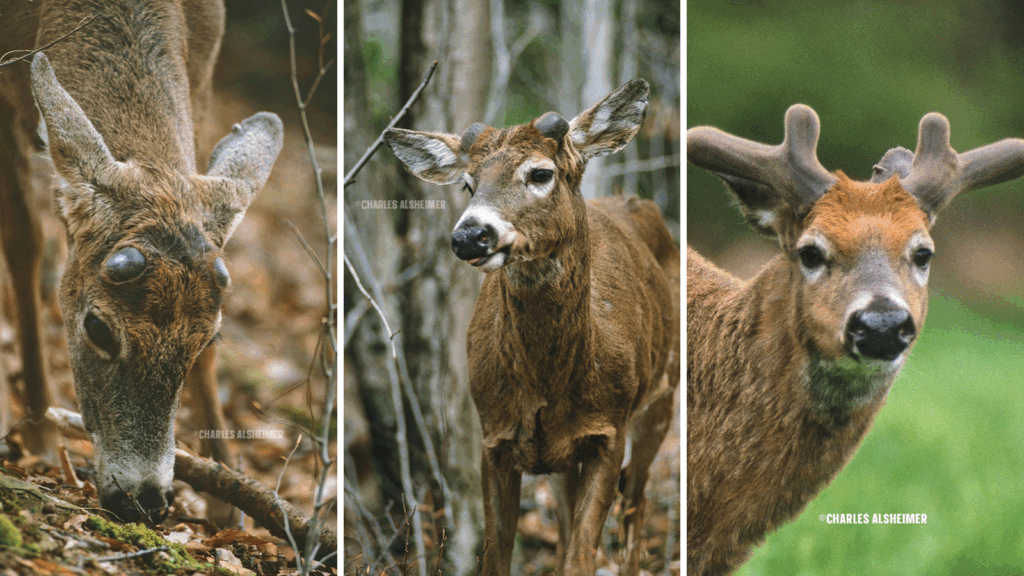
June: The lyric, “Summer time, and the livin’ is easy,” might be the best way to describe what June is about for whitetails. If rainfall is normal, nutritious food is lush and readily available. Further, the amount of daylight is at its annual peak, providing the hormonal support that lets antler growth accelerate. By late June, almost all of the primary points on a rack will have started growing.

July: The month begins with a buck’s antlers being very bulbous. As the month progresses, the antler’s beams and points will finish growing. By July 20, a mature buck’s antlers should look massive. Having adequate rainfall is critical to ensure optimum antler growth continues during July. If a drought occurs, the nutritional level of food drops, which can cause a decrease in antler growth. For this reason it’s critical that food-plotters offer drought resistant plant varieties during the June-July time frame.
Insects inflict tremendous stress on Northern whitetails during July when temperatures heat up. Those of us who have raised whitetails feel that a whitetail’s stress level at this time can rival that which deer experience during harsh winter months. In years when insect and parasite loads are extremely high, antler growth can be affected in a negative way. When July ends, the antlers on most bucks are fully formed, ushering in the antler-hardening process.
LEARN ABOUT A PRODUCT THAT MINIMIZES INSECTS AND FIGHTS EHD
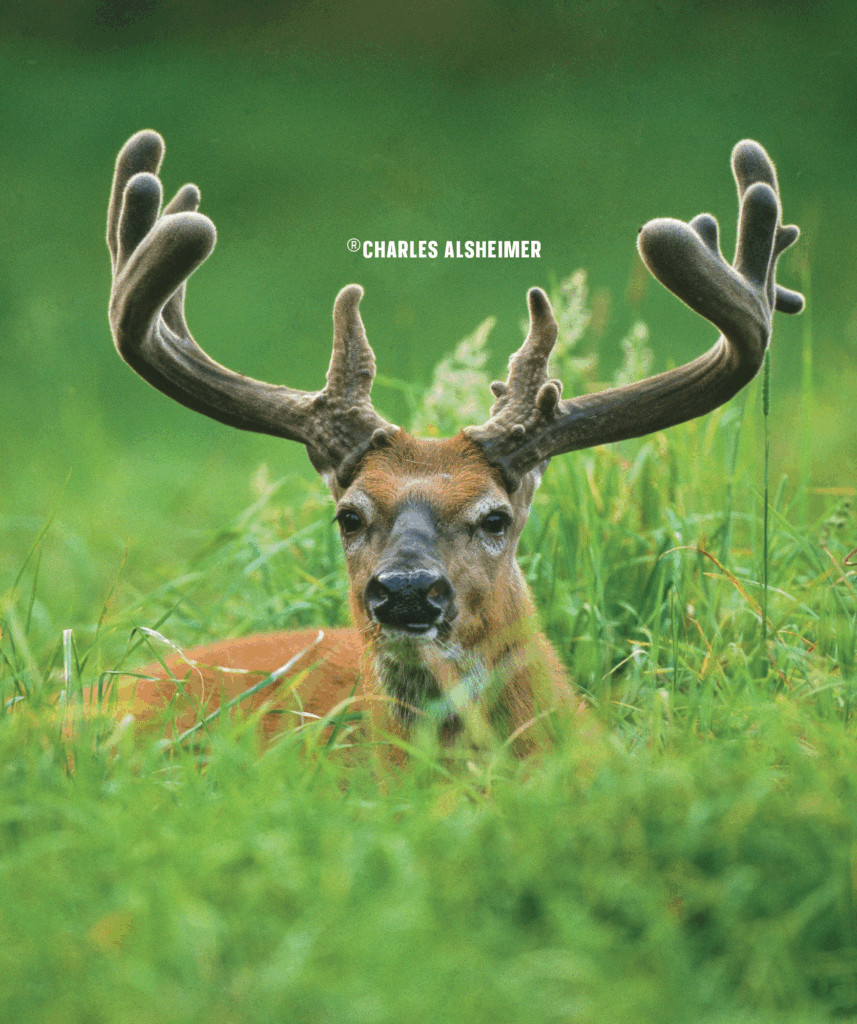
August: The majority of Northern bucks will have completed their antler growth by early to mid-August, at which time blood flow to antlers diminishes. For the next 20 to 25 days, the antlers will begin to calcify and harden. During this time, the overall size of antlers actually appears to decrease because the velvet covering them shrinks as the blood flow slows and ends. Sometime in late August through mid-September, most bucks will peel the velvet from their antlers.
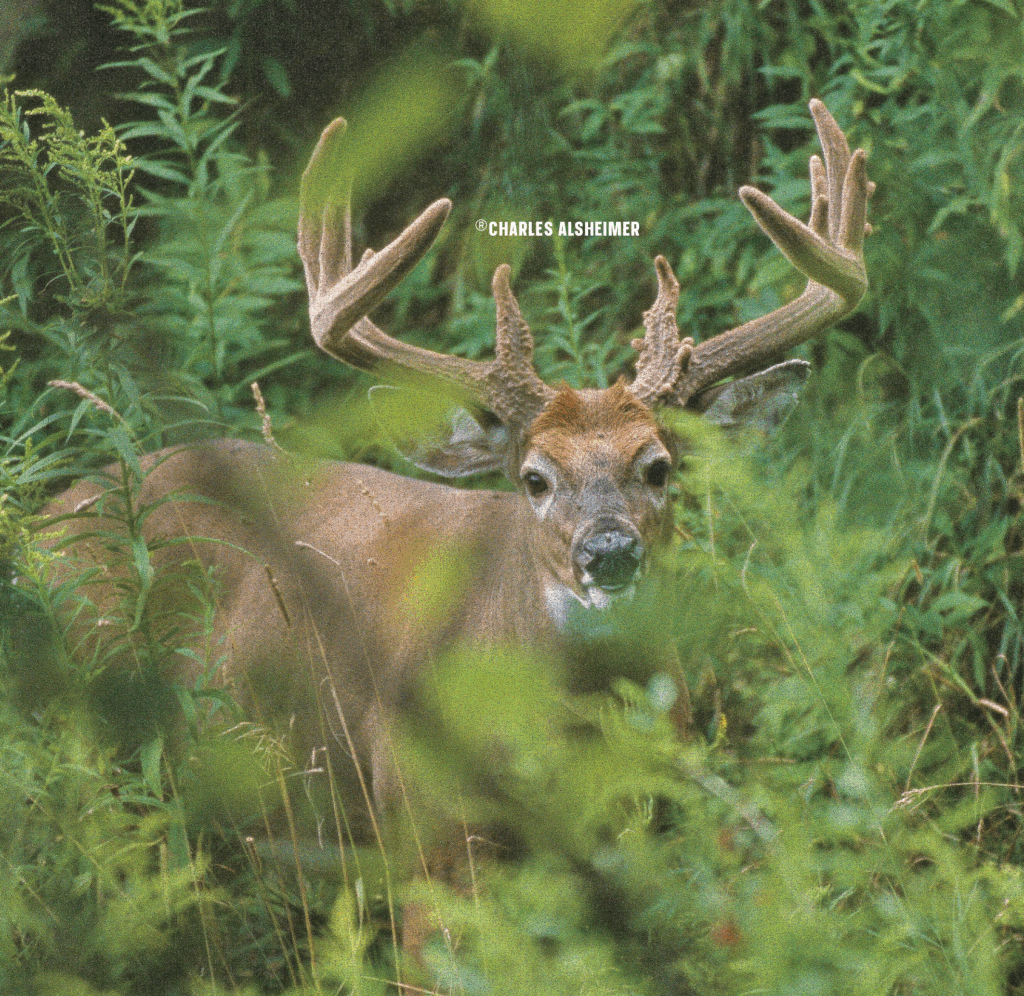
What Does It Take?
Many believe that great summer growing conditions are critical for optimum antler growth. Though extremely important, there is far more to the antler-growing equation than a great summer growing season.
Antler growth is nothing more than an extension of the animal’s body condition. If a buck’s body is not healthy and well maintained with proper nutrition, a buck’s antler growth might decrease 25 percent or more. So, for optimum antler growth to occur, great nutrition is required year round, not just during the growing season. Science has shown that if a buck enters the winter months rut-stressed, with minimal fat reserves, the chance of him growing great antlers the following summer is greatly diminished. Because of this it is critical for landowners to offer highly nutritious winter forages to ensure their property’s deer emerge from winter as healthy as possible. Three late fall and winter forages are brassica, turnips and oats.
Once bucks exit winter, they are famished and in need of high-octane forages, which means those with protein levels exceeding 25 percent. This is especially important from mid-May through mid-July in Northern regions. Over the past 20 years, I’ve planted a number of warm-season forages on our farm, with Imperial Whitetail Clover being our No. 1 offering. In addition to great forages, there must be adequate rainfall to ensure the forage protein levels remain high. If a drought occurs, forage protein levels can decrease dramatically, along with an increase in fiber content, making food sources less nutritious. Consequently, when droughts occur, nutrient levels required for optimal antler growth are not available in most deer foods, causing antlers to be smaller. Studies in South Texas have shown that in years with extreme dry conditions occurring antler growth can be suppressed up to 25 percent. The bottom line is that adequate moisture along with seasonal food sources throughout the year are critical for maximum antler growth.
— Charles Alsheimer (1947-2017) was a D&DH field editor for more than 30 years.

